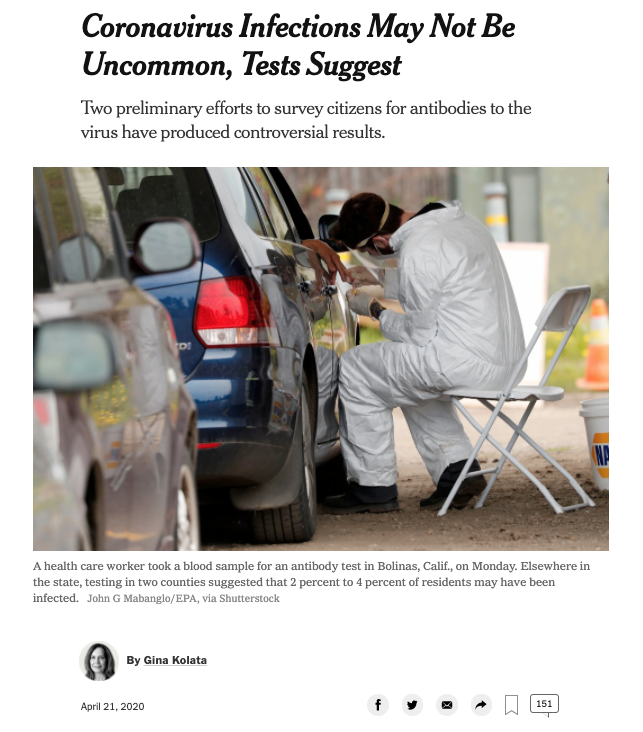I am grateful to moderator @jonc101x and speaker @jsross119 for allowing me to make a brief statement at the very interesting Stanford BMIR seminar yesterday (43:00 mark). A lightly edited text version follows: https://stanford.zoom.us/rec/share/ptFLJrvqxCRIX7PIwmCBXp5wDIfcT6a80HIe_aVezk4u2RgajOf13RI5r-1D5AQs">https://stanford.zoom.us/rec/share...
I asked Jonathan and Joe if I could speak briefly to address inaccurate remarks made about me last week and try to say something constructive about how the scientific error-correcting process can work better.
Regarding those remarks: Jay kindly apologized to me the same day. I accepted his apology for what he said in the heat of battle but didn& #39;t mean, and we had a good conversation. Enough said about that.
I& #39;d rather direct all of our attention to the much more important matter of ensuring that claims made in the media match up with the evidence we& #39;ve presented to substantiate them.
The first draft of the Santa Clara County preprint failed to describe key calculations and made five material mistakes in calculating the variance. First, the population-weighted intervals in Table 2 were miscalculated because the authors misunderstood a Stata command.
Second, they plugged the wrong interval from Table 2 into their delta method formula. Then, they made two mathematical errors in executing the delta method. Finally, they had the wrong specificity numbers because they misread their test kit& #39;s manufacturer insert.
These mistakes were so pervasive that the entire variance calculation had to be scrapped rendering the preprint& #39;s error bars meaningless, and without error bars an estimate is meaningless.
The first four errors were pointed out to or found by the authors by Sunday Apr 19, two days after their preprint appeared, but stood uncorrected until Thursday Apr 30 even as new LA County prevalence estimates were released to the media with no explanation of the methodology.
John Ioannidis was quoted in the New York Times on Apr 21 as saying that the Santa Clara County preprint was the best that science can do, and that the team was very careful. I leave it to others to judge how careful they were, but I think science can and must do better.
We all know mistakes and wrong turns are endemic to the normal scientific process even when scientists try their best to be careful. This is all the more true now that so many scientists are straining to do vital work at a breakneck pace.
COVID-19 has already claimed the lives of over 300,000 mothers, husbands, sisters, and best friends. As the death toll mounts there is no time to shield the evidence for blockbuster scientific claims from public scrutiny. I implore all scientists: please, show your work.
Give your colleagues the information they need to help verify the accuracy of your conclusions. Explain your methods and your statistical analysis completely and transparently. Release code at the same time as the preprint, and plan ahead so you can release data too.
And if you learn you have made mistakes, acknowledge them publicly, *before* your next media appearance.

 Read on Twitter
Read on Twitter



